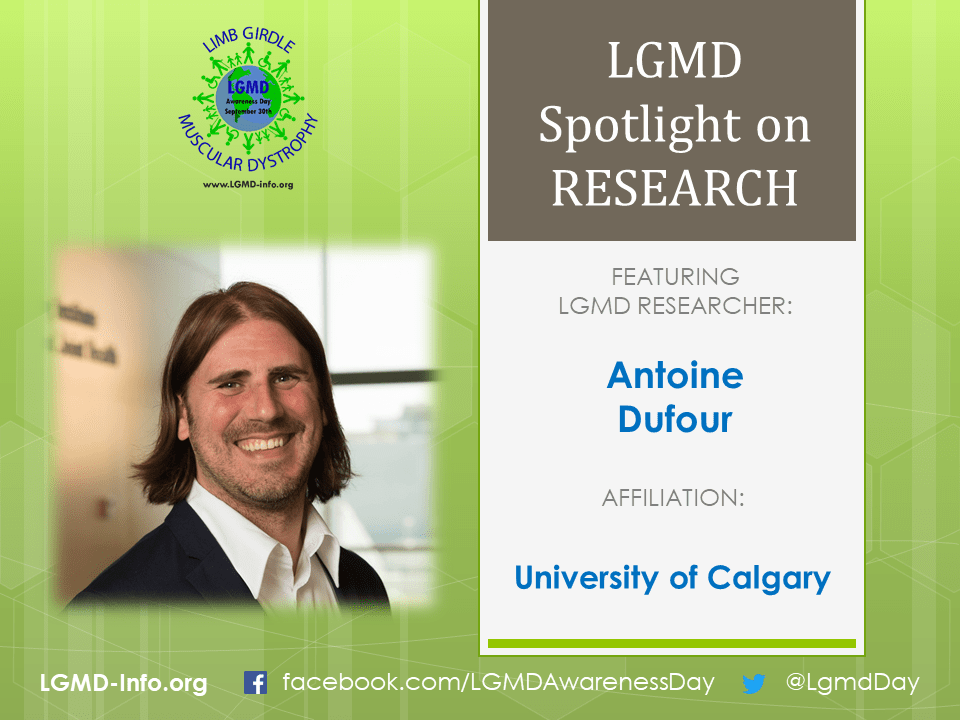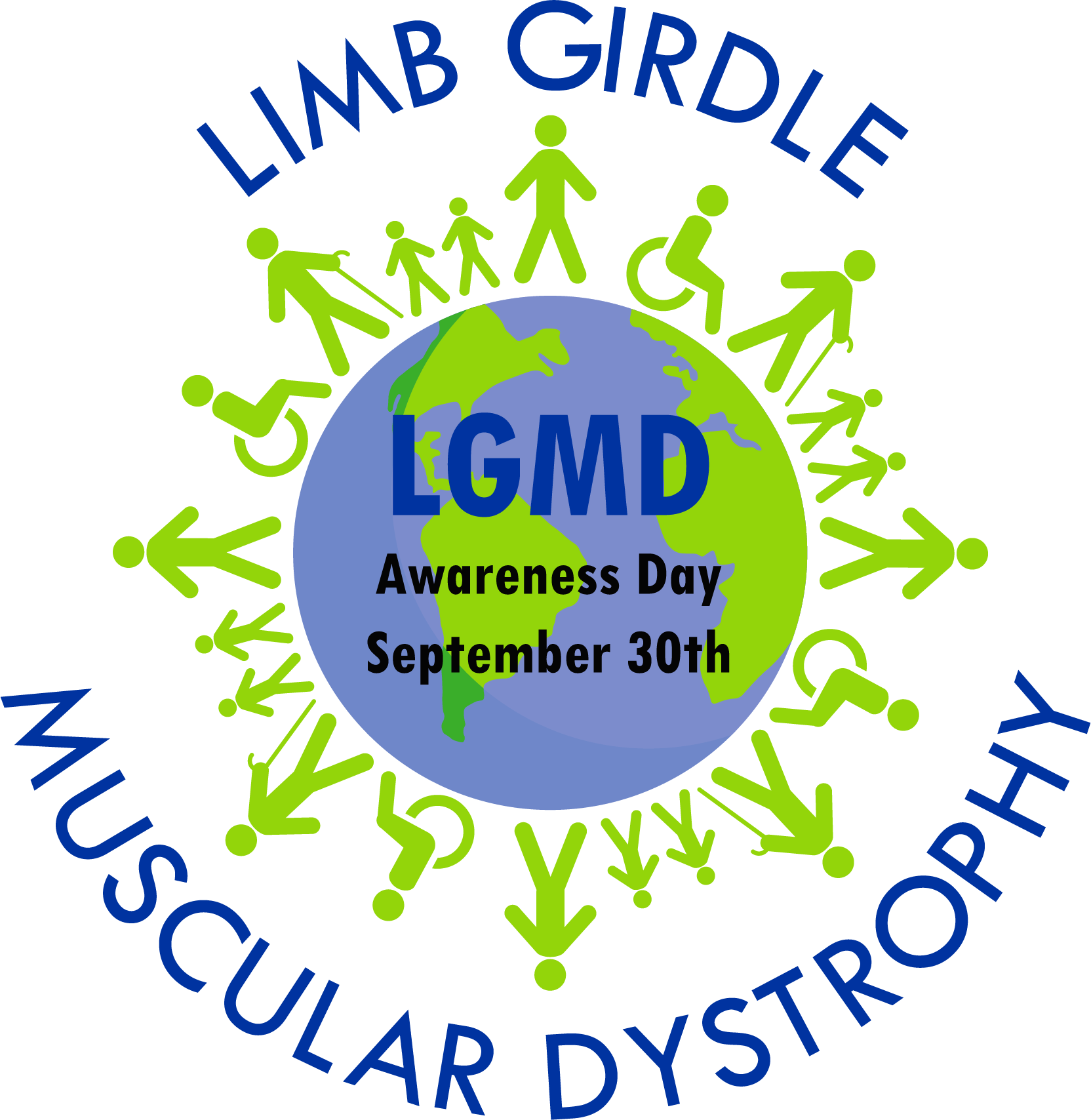LGMD RESEARCHER: Antoine Dufour

“LGMD SPOTLIGHT ON RESEARCH”
Researcher: Antoine Dufour
Affiliation: University of Calgary
Role or Position: Assistant Professor
What education and training did you have to arrive at your current position?
BA, SUNY Oswego, NY
MSc and PhD, Stony Brook University, NY
Post-Doctoral fellowship, University of British Columbia, BC, Canada
What led you to follow a career in research and in studying muscular dystrophy in particular?
2 reasons:
1- I study molecular scissors termed proteases and they have multiple functions all aspects of life, biological functions and in diverse muscular dystrophies. Limb-Girdle Muscular Dystrophy type 2A (LGMD2A) is caused by a mutation of one protease termed Calpain-3. I am working on better understanding its functions in muscle biology.
2- My older cousin had Duchenne Muscular Dystrophy and I grew up helping him out with various simple tasks he could no longer do as his disease worsens. I was only a kid/teenager (he passed away when I was 14) but that specifically dictated my career choice. I always wanted to become a scientist to characterize defective muscle functions in MDs and better understand how this disease work. After decades of research, there are still many mysteries about MDs and I find that fascinating.
What topics are you studying?
I study molecular scissors termed proteases in various disease including muscular dystrophies, arthritis, gastrointestinal diseases and cancer. We use approaches that can detect and track thousands of proteins. This allows us to view disease conditions on a systems level and monitor multiple changes simultaneously. We apply our techniques to characterize Calpain-3 that directly causes LGMD2A when defective.
How will your work help patients? Is it more scientific in nature or might it become a treatment for LGMDs or MDs in general?
Our work is scientific in nature and will help characterize all the proteins that are changed, affected and causing LGMDs. Despite decades of research, we have a narrow understanding of MDs and our work offers unbiased approaches to track thousands of changes and identify novel drug targets that remain unidentified in context of MDs.
What would you like patients and others interested in LGMD to know about research (your own projects and about the field in general)?
Our work is unbiased meaning we do not start from pre-conceived notions about LGMD. We acquire large amount of data and integrate our results to identify novel interactions within this “web of interactions”. Our work creates the potential for entirely new avenues of exploration and promotes constant innovation over iterative cycles. We develop scientific tools to find a “needle in the haystack” and we will continue finding ways to track down small changes within cells that have profound impact on muscle functions in LGMD patients.
What inspires you to continue working in this field?
The excitement of finding new interactions that no one else knows about yet and try to fit this new “puzzle piece” within the known networks we currently know about.
How can patients encourage you and help your work?
Continue raising awareness and communicating to various communities how these diseases affect your daily lives. Social media can be a valuable tool to quickly reach large audiences. For example, the ice bucket challenge to raise awareness for ALS (Amyotrophic lateral sclerosis) was quite successful. It raised significant sums of money for research and offered an opportunity to educate about this disease to the general population.







